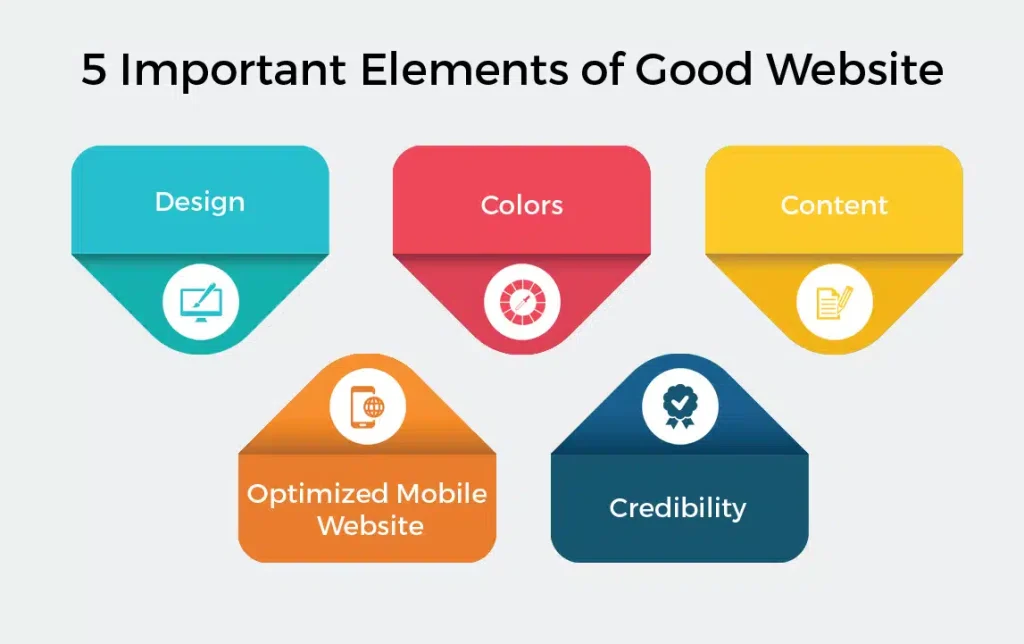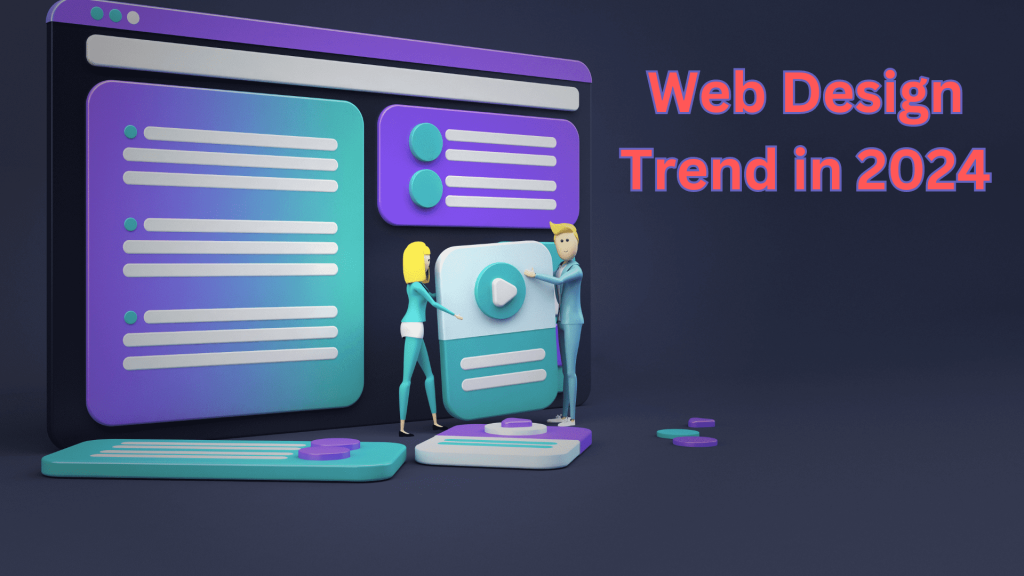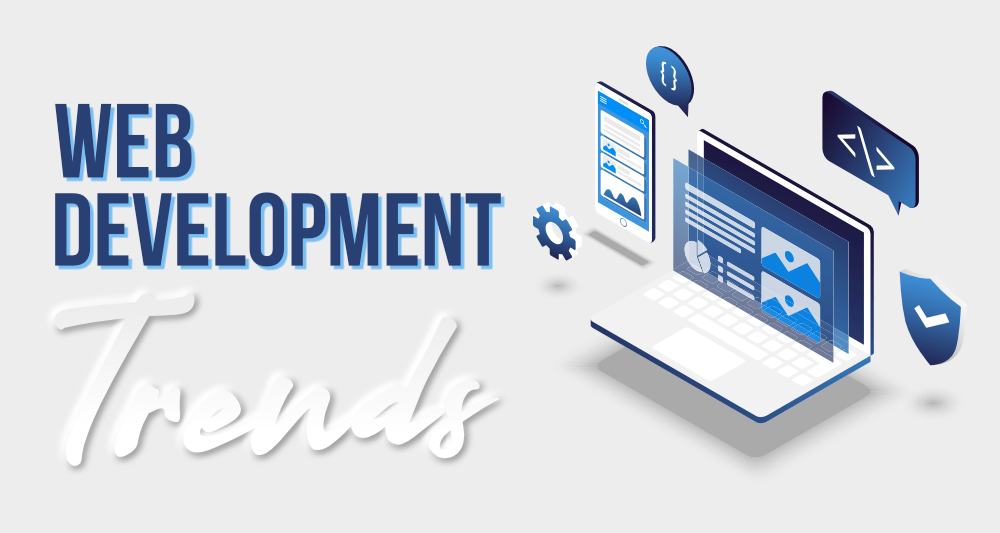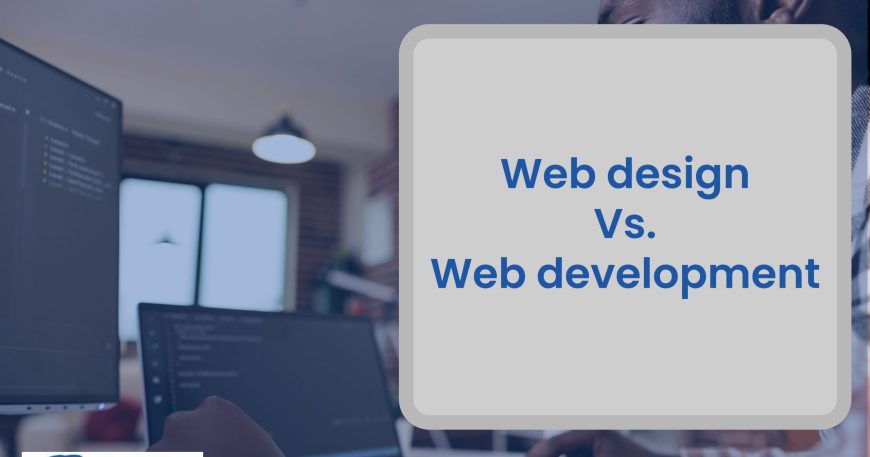Web Design vs. Web Development:
Table of Contents
Web Design vs. Web Development: Discover Which One Your Website Desperately Needs!
Introduction
Defining Web Design Vs. Web Development
In the modern digital era, it’s essential for both businesses and individuals to maintain a robust online presence. Two critical components of creating an effective website are web design and web development (Web design Vs. web development). While frequently used interchangeably, these terms distinctly represent various facets within the process of crafting a website.
Web design focuses on the visual aesthetics and user experience of a website. It involves the creative process of designing the layout, color scheme, typography, and overall look and feel of the site. A properly crafted website captivates with its visual charm, ensures seamless navigation, and delivers an exceptional user experience.
On the other hand, web development is concerned with the technical aspects of building a website. It involves coding and programming to create the structure and functionality of the site. Web development ensures that the website is responsive, fast, secure, and capable of handling various user interactions.
Importance of Choosing the Right Approach
Choosing the right approach between web design and web development (Web design Vs. web development) is critical for the success of a website. A visually stunning website without proper functionality will fail to engage users, while a highly functional website with poor design can drive users away. Therefore, understanding the difference between web design and web development (Web design Vs. web development) and knowing which one your website needs most is essential.
Relevance in Today’s Digital Landscape
In today’s digital landscape, where competition is fierce, and user expectations are high, having a well-designed and fully functional website is no longer optional. It is a necessity. Businesses must invest in both web design and web development (Web design Vs. web development) to create websites that not only attract visitors but also convert them into loyal customers.
Web Design: The Aesthetic Perspective
Definition and Scope
Web design is the process of creating the visual aspects of a website. It encompasses the layout, color scheme, typography, images, and overall aesthetic elements that define the appearance and feel of a site. Web design aims to create an attractive, user-friendly interface that enhances the user experience and reinforces the brand identity.
Importance of Visual Appeal
The aesthetic charm of a website holds substantial importance in drawing in and maintaining visitors. A well-designed website creates a positive first impression, engages users, and encourages them to explore further. It can significantly impact user behavior, including their decision to stay on the site, navigate through different pages, and take desired actions such as making a purchase or filling out a contact form.
Key Elements of Web Design

Color Theory
Understanding the principles of color theory constitutes a foundational element within the realm of web design. The choice of colors can evoke emotions, convey messages, and influence user behavior. Understanding color theory helps designers create visually harmonious and appealing websites. For example, vibrant hues such as red and orange can instill a feeling of urgency, whereas serene shades like blue and green often evoke a sense of tranquility and confidence.
Typography
Typography involves selecting and arranging fonts in a way that enhances readability and visual appeal. Good typography ensures that the text is legible and aligns with the overall design aesthetic. It includes choosing font styles, sizes, spacing, and hierarchy to create a cohesive and engaging reading experience.
Layout
The layout refers to the arrangement of elements on a webpage, including text, images, videos, and navigation menus. An effective layout guides users’ attention, makes the content easy to find, and ensures a logical flow of information. Designers use grids and visual hierarchy principles to create balanced and organized layouts.
Images and Graphics
Visual elements and illustrations form integral parts of web design. High-quality visuals can capture attention, convey messages quickly, and enhance the overall aesthetic appeal. Designers need to choose images that are relevant, engaging, and optimized for fast loading times to avoid slowing down the website.
Branding
Branding is crucial in web design as it reflects the identity and values of a business. Consistent use of colors, fonts, logos, and other visual elements helps create a strong brand presence. A well-branded website reinforces brand recognition and builds trust with the audience.
Web Design Principles
Balance
Balance in web design ensures that no single element overwhelms the others, creating a visually stable composition. It can be symmetrical (elements evenly distributed) or asymmetrical (elements balanced by visual weight).
Contrast
Utilizing contrast effectively emphasizes key elements while enhancing visual engagement. It involves using differences in color, size, shape, and texture to make certain elements stand out and draw attention.
Emphasis
Emphasis focuses on making key elements more prominent to guide users’ attention. It can be achieved through size, color, contrast, and placement, ensuring that users notice the most important information first.
Consistency
Consistency in design elements, such as fonts, colors, and navigation, ensures a cohesive and user-friendly experience. Consistent design helps users understand how to interact with the website and improves usability.
Unity
Unity refers to the harmony and coherence of design elements. It ensures that all parts of the design work together to create a unified whole, providing a seamless and pleasing user experience.
Web Development: The Functional Backbone
Definition and Scope
Web development involves the technical process of building a website, focusing on the code and functionality that make the site work. It includes front-end development (client-side), back-end development (server-side), and full-stack development (both client and server-side). Web developers ensure that websites are responsive, efficient, and capable of handling user interactions.
Importance of Functionality
Functionality is crucial for a website’s performance and user satisfaction. A website must load quickly, work smoothly, and provide a seamless experience across different devices and browsers. Functional issues can frustrate users and lead to high bounce rates, negatively impacting the website’s effectiveness.
Key Elements of Web Development
Front-end Development
Front-end development involves creating the user interface (UI) and ensuring that users can interact with the website effectively. It includes the use of HTML, CSS, and JavaScript to build and style the website’s pages.
HTML
HTML (HyperText Markup Language) serves as the established norm for crafting webpages. It defines the structure and content of a webpage, allowing developers to organize text, images, links, and other elements.
CSS
Cascading Style Sheets (CSS) play a crucial role in enhancing the appearance and structure of web pages. It controls the visual presentation of HTML elements, including colors, fonts, margins, and positioning, enhancing the overall look and feel of the site.
JavaScript
JavaScript serves as a programming language essential for imbuing websites with interactive capabilities and dynamic functionalities. It enables developers to create features like form validation, sliders, and interactive maps, enhancing user engagement and experience.
Back-end Development
Back-end development involves creating the server-side logic that powers a website. It includes managing databases, servers, and APIs to ensure that the website functions correctly and efficiently.
Server
The server is responsible for processing requests from users’ browsers and delivering the appropriate content. Back-end developers set up and manage servers to ensure that the website is reliable and can handle traffic.
Database
Databases store and manage data for websites. Back-end developers use databases to organize, retrieve, and manipulate data, ensuring that the website can efficiently process user inputs and display the correct information.
APIs
Application Programming Interfaces (APIs) facilitate communication and data sharing among diverse software systems. Back-end developers use APIs to connect the website with external services and applications, enhancing functionality and integration.
Full-stack Development
Full-spectrum development entails engaging with both the front-end and back-end aspects of a website. Full-stack developers have the skills to handle the entire development process, from designing the user interface to implementing server-side logic and managing databases.
Web Development Principles
Clean Code
Clean code is easy to read, understand, and maintain. Writing clean code involves following best practices, such as using meaningful variable names, commenting on code, and keeping functions and methods concise.
Scalability
Scalability refers to a website’s ability to handle increased traffic and data as it grows. Developers design scalable websites by optimizing code, using efficient algorithms, and planning for future growth.
Security
Security is a critical aspect of web development. Developers implement measures to protect websites from threats such as hacking, data breaches, and malware. This includes using secure coding practices, encrypting data, and regularly updating software.
Performance Optimization
Performance optimization ensures that a website loads quickly and runs smoothly. Developers optimize performance by minimizing file sizes, using caching, and optimizing server responses, enhancing the user experience and reducing bounce rates.
Types and Categories in (Web design Vs. web development)
Web Design Types
Static Design
Static design involves creating web pages with fixed content that does not change dynamically. These pages are pre-built and delivered to users as-is, suitable for websites with simple and unchanging information.
Dynamic Design
Dynamic design involves creating web pages that can change and update content based on user interactions or data from databases. These pages are generated in real-time, allowing for personalized and interactive experiences.
Responsive Design
Responsive design ensures that a website looks and functions well on different devices, including desktops, tablets, and smartphones. It involves using flexible layouts, images, and CSS media queries to adapt to various screen sizes.
Adaptive Design
Adaptive design involves creating different layouts for different devices. Unlike responsive design, which uses a single flexible layout, adaptive design provides multiple fixed layouts tailored to specific screen sizes.
Web Development Categories
Front-end Development
Front-end development focuses on creating the user interface and ensuring that users can interact with the website. It involves using HTML, CSS, and JavaScript to build and style web pages.
Back-end Development
Back-end development focuses on the server-side logic, databases, and APIs that power a website. It involves managing data, processing user requests, and ensuring that the website functions correctly and efficiently.
Full-stack Development
Full-spectrum development entails engaging with both the front-end and back-end aspects of a website. Full-stack developers handle the entire development process, from designing the user interface to implementing server-side logic and managing databases.
Skills Required
Essential Skills for Web Designers
Creativity
Creativity is essential for web designers to create visually appealing and unique designs. Designers must think outside the box and come up with innovative ideas to make websites stand out.
Graphic Design Tools
Web designers must be proficient in graphic design tools such as Adobe Photoshop, Illustrator, and Sketch. These tools allow designers to create and edit visual elements, enhancing the overall design.
UX/UI Design
UX (User Experience) and UI (User Interface) design skills are crucial for web designers. UX design focuses on creating a positive user experience, while UI design involves designing the interface elements that users interact with.
Communication
Effective communication skills are important for web designers to understand client requirements, present design concepts, and collaborate with other team members. Clear communication ensures that the design meets the client’s vision and objectives.
Essential Skills for Web Developers
Programming Languages
Web developers must be proficient in programming languages such as HTML, CSS, JavaScript, Python, Ruby, and PHP. These languages are used to create the structure, style, and functionality of websites.
Problem-Solving
Problem-solving skills are crucial for web developers to debug code, fix issues, and find efficient solutions to technical challenges. Developers must be able to troubleshoot and resolve problems effectively.
Analytical Thinking
Analytical thinking helps web developers understand complex requirements, analyze data, and make informed decisions. It involves breaking down problems into smaller parts and finding logical solutions.
Collaboration
Collaboration skills are important for web developers to work effectively with designers, project managers, and other team members. Good collaboration ensures that the project runs smoothly and meets all requirements.
Tools and Technologies
Popular Web Design Tools
Adobe XD
Adobe XD stands as a robust solution tailored for crafting and prototyping user interfaces. It allows designers to create wireframes, mockups, and interactive prototypes, streamlining the design process.
Sketch
Sketch stands out as a widely favored tool in the realm of crafting user interfaces and web designs. It offers a range of features for vector editing, prototyping, and collaboration, making it a favorite among web designers.
Figma
Figma operates as a design tool based in the cloud, facilitating seamless collaboration in real-time. It allows designers to create, share, and collaborate on designs, making it ideal for team projects.
Canva
Canva is a user-friendly design tool that allows designers to create graphics, presentations, and social media posts. It offers a range of templates and design elements, making it easy to create professional designs.
Popular Web Development Tools
Visual Studio Code
Visual Studio Code has gained widespread acclaim as a preferred choice among developers for editing code in web development. It offers a range of features, including syntax highlighting, debugging, and extensions, making it a powerful tool for developers.
GitHub
GitHub serves as a platform facilitating version control and collaborative efforts. It allows developers to manage code repositories, track changes, and collaborate with other developers, ensuring efficient project management.
Node.js
Node.js serves as a JavaScript runtime environment enabling developers to construct server-side applications effectively. It enables the creation of fast and scalable web applications, making it a popular choice for web development.
Docker
Docker is a platform for creating, deploying, and managing containerized applications. It allows developers to package applications and their dependencies into containers, ensuring consistency and scalability.
Processes Involved
Web Design Process
Research
Research is the first step in the web design process. Designers gather information about the client’s business, target audience, and competitors to create a design that meets their needs and objectives.
Wireframing
Wireframing involves creating a basic layout of the website, outlining the structure and placement of elements. It helps designers plan the layout and ensure that all necessary components are included.
Prototyping
Prototyping involves creating interactive mockups of the website. It allows designers to test the functionality and user experience, making adjustments before the final design is implemented.
Visual Design
Visual design is the process of creating the final look and feel of the website. Designers create high-fidelity mockups, incorporating colors, typography, images, and other visual elements.
User Testing
User testing involves evaluating the design with real users to identify any issues and gather feedback. It helps designers make improvements and ensure that the website provides a positive user experience.
Web Development Process
Planning
Initial strategizing marks the inception of the web development journey. Developers create a project plan, outlining the requirements, timeline, and resources needed to build the website.
Coding
Coding involves writing the code that creates the structure and functionality of the website. Developers use programming languages such as HTML, CSS, and JavaScript to build the front-end, and languages like Python and Ruby for the back-end.
Testing
Testing involves checking the website for bugs and issues. Developers perform various tests, including functional testing, performance testing, and security testing, to ensure that the website works correctly.
Deployment
Deployment is the process of launching the website and making it live on the internet. Developers set up the server, configure the domain, and ensure that the website is accessible to users.
Maintenance
Maintenance involves updating and optimizing the website after it is launched. Developers perform regular updates, fix any issues, and make improvements to ensure that the website remains functional and secure.
Collaboration Between Designers and Developers
Importance of Collaboration
Effective teamwork between designers and developers plays a pivotal role in the successful creation of websites. It ensures that the design and functionality are aligned, resulting in a cohesive and effective website.
Communication Strategies
Effective communication strategies help designers and developers work together efficiently. Regular meetings, clear documentation, and open channels of communication ensure that everyone is on the same page.
Tools for Collaboration
Slack
Slack is a popular communication tool that allows teams to collaborate in real-time. It offers channels for different topics, direct messaging, and integrations with other tools, making it easy to stay connected.
Trello
Trello is a project management tool that helps teams organize tasks and track progress. It uses boards, lists, and cards to visualize tasks, making it easy to manage projects and collaborate with team members.
Asana
Asana serves as a task management solution designed to assist teams in strategizing, arranging, and monitoring their work progress. It offers features such as task assignments, deadlines, and project timelines, ensuring that projects stay on track.
Jira
Jira serves as a project management solution specifically tailored for the needs of software development teams. It offers features for issue tracking, project planning, and collaboration, making it ideal for development teams.
Benefits and Challenges
(Web design Vs. web development)
Benefits of Web Design
Enhanced User Experience
A well-designed website provides a positive user experience, making it easy for users to navigate and find information. This could result in greater interaction and improved conversion rates.
Stronger Brand Identity
Consistent and visually appealing web design helps create a strong brand identity. It reinforces brand recognition and builds trust with the audience, making the brand more memorable.
Improved Engagement
Attractive and user-friendly web design can improve user engagement. By creating an enjoyable and intuitive experience, users are more likely to stay on the site longer and interact with the content.
Challenges of Web Design
Keeping Up with Trends
Web design trends are constantly evolving, and designers must stay updated to create modern and relevant designs. This can be challenging, as it requires continuous learning and adaptation.
Balancing Aesthetics and Usability
Balancing aesthetics and usability is a common challenge in web design. While a visually stunning website is important, it must also be functional and easy to use to ensure a positive user experience.
Benefits of Web Development
Robust Functionality
Web development ensures that a website has robust functionality, allowing it to handle various user interactions and perform complex tasks efficiently. This contributes significantly to the holistic satisfaction and enjoyment of users.
Improved Performance
Optimized web development improves the performance of a website, ensuring that it loads quickly and runs smoothly. This can reduce bounce rates and keep users engaged.
Greater Control and Customization
Web development provides greater control and customization, allowing developers to create unique and tailored websites. This flexibility enables the creation of websites that meet specific requirements and goals.
Challenges of Web Development
Complexity of Coding
Coding can be complex and challenging, requiring a deep understanding of programming languages and frameworks. Developers must be skilled and experienced to write efficient and error-free code.
Security Concerns
Security is a major concern in web development. Developers must implement measures to protect websites from threats such as hacking, data breaches, and malware, which can be challenging and time-consuming.
Cross-Browser Compatibility
Ensuring that a website works correctly across different browsers and devices is a common challenge. Developers must test and optimize the website to ensure compatibility, which can be a time-consuming process.
Case Studies
Successful Web Design Projects
Examples of Websites with Exceptional Design
- Apple – Apple’s website is known for its sleek and minimalist design, providing an intuitive user experience and strong brand presence.
- Airbnb – Airbnb’s website features a visually appealing design with high-quality images and a user-friendly interface, enhancing user engagement.
Impact on User Engagement and Conversion
- Spotify – Spotify’s redesign focused on improving user experience and engagement, leading to increased user retention and conversion rates.
- Dropbox – Dropbox’s website redesign simplified the user interface, making it easier for users to navigate and interact with the site, resulting in higher conversion rates.
Successful Web Development Projects
Examples of Websites with Robust Functionality
- Amazon – Amazon’s website is known for its robust functionality, handling millions of transactions and user interactions seamlessly.
- Facebook – Facebook’s website features complex functionality, allowing users to connect, share, and interact in real time.
Impact on Performance and User Satisfaction
- Google – Google’s focus on performance optimization ensures that its website loads quickly and provides a seamless user experience, resulting in high user satisfaction.
- Netflix – Netflix’s website is optimized for performance, providing fast loading times and a smooth streaming experience, leading to high user satisfaction.
Future Trends
Emerging Trends in Web Design

Minimalist Design
Minimalist design focuses on simplicity and functionality, using clean lines, ample white space, and minimal elements to create a modern and elegant look.
Dark Mode
Dark mode is a popular trend that offers an alternative color scheme with darker backgrounds and lighter text. It can reduce eye strain and improve readability in low-light environments.
3D Elements
3D elements and animations are becoming increasingly popular in web design. They add depth and interactivity, creating a more engaging and immersive user experience.
Emerging Trends in Web Development

Progressive Web Apps (PWAs)
Progressive Web Apps combine the best features of web and mobile apps, providing fast loading times, offline functionality, and a native app-like experience.
Artificial Intelligence (AI) Integration
AI integration in web development can enhance functionality and user experience. AI-powered chatbots, personalized recommendations, and advanced data analysis are some examples of AI applications.
Enhanced Security Measures
As cyber threats continue to evolve, enhanced security measures are becoming increasingly important. Web developers are focusing on implementing advanced security protocols to protect websites from threats.
Conclusion
Summary of Key Points
Web design and web development (Web design Vs. web development) are two distinct but equally important aspects of creating a successful website. Web design emphasizes enhancing visual appeal and user interaction, whereas web development centers on optimizing technical operations and overall efficiency. Both are crucial for creating a website that attracts and retains users, providing a positive user experience, and achieving business goals.
Importance of a Balanced Approach
A balanced approach that combines both web design and web development (Web design Vs. web development) is essential for creating an effective website. Investing in both aspects ensures that the website is visually appealing, user-friendly, and technically robust, leading to higher user engagement and satisfaction.
Final Recommendations
For businesses and individuals looking to create or improve their websites, it is important to understand the difference between web design and web development (Web design Vs. web development) and invest in both. Working with skilled designers and developers can help create a website that meets all requirements and provides a seamless and enjoyable user experience.
#Web design Vs. web development,#Web design Vs. web development,#Web design Vs. web development,#Web design Vs. web development,#Web design Vs. web development,#Web design Vs. web development,
#Web design Vs. web development,#Web design Vs. web development,#Web design Vs. web development,#Web design Vs. web development,#Web design Vs. web development,#Web design Vs. web development,#Web design Vs. web development,#Web design Vs. web development,#Web design Vs. web development,#Web design Vs. web development,#Web design Vs. web development,#Web design Vs. web development,





